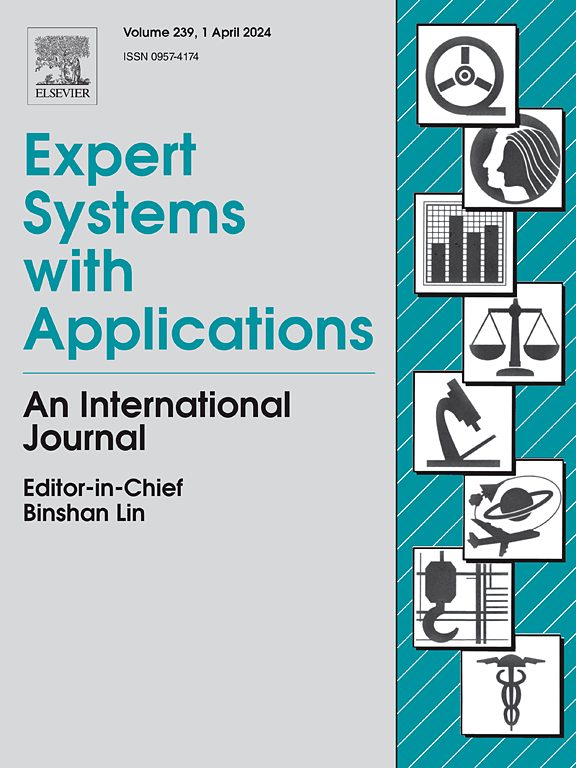Assessment of reaching laws for linear and nonlinear sliding surfaces: Improving performance of pipe crack sealing manipulator
IF 7.5
1区 计算机科学
Q1 COMPUTER SCIENCE, ARTIFICIAL INTELLIGENCE
引用次数: 0
Abstract
This study investigates the control of a tree-type pipe crack sealing manipulator (PCSM) with five specialized branches, designed to seal cracks inside the concrete pipes. This PCSM has the ability to navigate in vertical and horizontal pipes for crack repair tasks. A CAD model of the pipe with target crack and PCSM has been modelled in SolidWorks, and conclusive data of the crack has been further exported in Simulink for precise control. Observation and simulation studies in SolidWorks reveal that only the fifth branch of the PCSM successfully and effectively executes crack repair over substantial lengths. Furthermore, the repair of the crack has been assured for the branch of the PCSM. However, the accurate trajectory tracking in pipe crack sealing tasks is challenging due to model uncertainties and disturbances in confined environments. Sliding mode control (SMC) with various reaching laws for linear and nonlinear sliding surfaces has been examined to counter these challenges. The research investigated the efficacy of nine SMC reaching laws. These reaching laws are based on recent advancements in SMC. The novelty of this work uniquely compares nine reaching laws on both linear and nonlinear surfaces, where only CPRL (constant plus proportional rate reaching law) has previously been explored in nonlinear cases. Simulation-based evaluation using a SolidWorks-modeled PCSM and trajectory control in Simulink, incorporating mass uncertainty (+5 %) and joint disturbances equal to 40 % of the mean torque, demonstrates that nonlinear sliding surfaces consistently outperform linear ones in terms of tracking accuracy and disturbance rejection. Among the nine tested reaching laws on nonlinear surfaces, FTSMRL (novel fast terminal sliding mode reaching law), TSMRL (terminal sliding mode reaching law), and NSMRL (new sliding mode reaching law) demonstrated significantly lower tracking errors compared to the others, with the rms error of these three laws are comparable. The control efforts of FTSMRL and TSMRL were moderately high and chattering is very high compared to NSMRL. Therefore, NSMRL is proposed as the most suitable reaching law in this study due to its balanced performance, minimal chattering and control effort, as well reliable tracking accuracy. Furthermore, the study also calculated the reaching times for each law and confirmed their asymptotic stability using the Lyapunov stability criterion, demonstrating the efficacy of SMC in enhancing PCSM control.
线性和非线性滑动面的趋近规律评估:提高管道密封机械手的性能
本文研究了具有五个分支的树形管道裂缝密封机械手的控制问题,该机械手主要用于混凝土管道内部裂缝的密封。该PCSM具有在垂直和水平管道中进行裂缝修复任务的能力。在SolidWorks中建立了含目标裂纹和PCSM的管道的CAD模型,并在Simulink中导出了裂纹的最终数据,以便进行精确控制。SolidWorks中的观察和模拟研究表明,只有PCSM的第五个分支成功有效地执行了相当长的裂纹修复。此外,还为PCSM分支的裂缝修复提供了保证。然而,由于模型的不确定性和受限环境的干扰,在管道裂缝密封任务中精确跟踪轨迹是一项挑战。为了应对这些挑战,研究了具有各种线性和非线性滑动表面到达律的滑模控制(SMC)。研究了9种SMC达到规律的疗效。这些具有影响力的法律是基于SMC的最新进展。这项工作的新新性独特地比较了线性和非线性曲面上的九种趋近律,其中只有CPRL(常数加比例率趋近律)以前在非线性情况下被探索过。基于仿真的评估使用solidworks建模的PCSM和Simulink中的轨迹控制,结合质量不确定性(+ 5%)和等于平均扭矩40%的联合干扰,表明非线性滑动表面在跟踪精度和抗干扰方面始终优于线性滑动表面。在所测试的9种非线性表面趋近律中,FTSMRL(新型快速终端滑模趋近律)、TSMRL(终端滑模趋近律)和NSMRL(新型滑模趋近律)的跟踪误差显著低于其他律,且三者的均方根误差具有可比性。与NSMRL相比,FTSMRL和TSMRL的控制力度中等,抖振非常大。因此,由于NSMRL具有平衡的性能、最小的抖振和控制努力以及可靠的跟踪精度,因此被认为是本研究中最合适的逼近律。此外,研究还计算了每个律的到达时间,并利用Lyapunov稳定性判据证实了它们的渐近稳定性,证明了SMC在增强PCSM控制方面的有效性。
本文章由计算机程序翻译,如有差异,请以英文原文为准。
求助全文
约1分钟内获得全文
求助全文
来源期刊

Expert Systems with Applications
工程技术-工程:电子与电气
CiteScore
13.80
自引率
10.60%
发文量
2045
审稿时长
8.7 months
期刊介绍:
Expert Systems With Applications is an international journal dedicated to the exchange of information on expert and intelligent systems used globally in industry, government, and universities. The journal emphasizes original papers covering the design, development, testing, implementation, and management of these systems, offering practical guidelines. It spans various sectors such as finance, engineering, marketing, law, project management, information management, medicine, and more. The journal also welcomes papers on multi-agent systems, knowledge management, neural networks, knowledge discovery, data mining, and other related areas, excluding applications to military/defense systems.
 求助内容:
求助内容: 应助结果提醒方式:
应助结果提醒方式:


